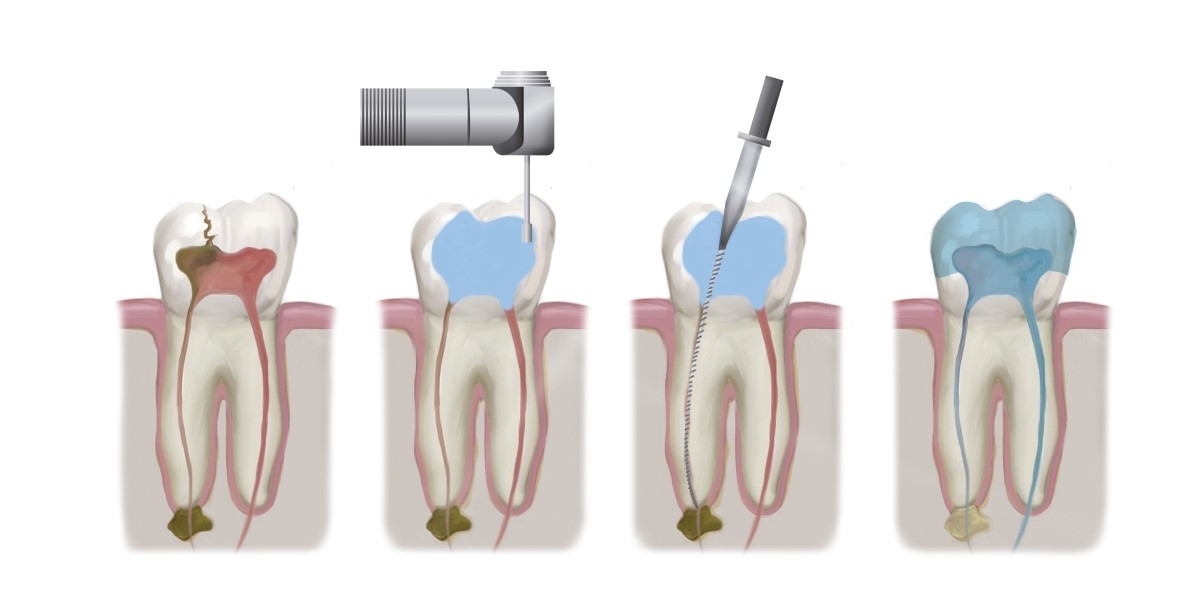Root canal treatment, often shrouded in misconception and fear, is a dental procedure crucial for saving a severely decayed or infected tooth. In the United Kingdom, where dental health is of paramount importance, understanding the nuances of root canal treatment is essential for maintaining oral well-being. This comprehensive guide aims to demystify the procedure, elucidate its benefits, and provide insights into what patients can expect when undergoing root canal treatment in the UK.
Understanding Root Canal Treatment
Root canal treatment, also known as endodontic therapy, is a dental procedure aimed at salvaging a tooth that is severely decayed, infected, or damaged. The procedure involves removing the infected or damaged pulp – the soft tissue inside the tooth – cleaning and disinfecting the root canals, and then filling and sealing them to prevent further infection. Root canal treatment is typically performed by endodontists, who are specialists in treating dental pulp and the tissues surrounding the roots of the teeth.
Indications for Root Canal Treatment
Several factors may necessitate root canal treatment, including:
Severe Tooth Decay: When tooth decay progresses to the extent that it reaches the inner pulp chamber, root canal treatment becomes necessary to remove the infected pulp and save the tooth.
Dental Trauma: Trauma to the tooth, such as fractures or chips, can expose the pulp to bacteria, leading to infection and inflammation.
Infected Pulp: If bacteria infiltrate the pulp due to untreated cavities or dental injuries, it can result in pulp infection, causing pain, swelling, and abscess formation.
The Root Canal Procedure
1. Initial Assessment:
Before commencing root canal treatment, the dentist conducts a thorough examination, which may involve X-rays to assess the extent of damage to the tooth and surrounding structures.
2. Anesthesia:
Local anesthesia is administered to numb the tooth and surrounding area, ensuring that the patient remains comfortable throughout the procedure.
3. Pulp Removal:
Using specialized instruments, the dentist creates an opening in the crown of the tooth to access the pulp chamber and root canals. The infected or damaged pulp is then carefully removed.
4. Cleaning and Shaping:
The root canals are meticulously cleaned, disinfected, and shaped using fine instruments to remove any debris, bacteria, and infected tissue.
5. Filling and Sealing:
Once the root canals are thoroughly cleaned and shaped, they are filled with a biocompatible material called gutta-percha to prevent recontamination. The opening in the crown is then sealed with a temporary or permanent filling.
6. Restoration:
In some cases, particularly if the tooth is extensively damaged, a dental crown may be placed over the treated tooth to restore its strength, functionality, and aesthetics.
Benefits of Root Canal Treatment
Root canal treatment offers numerous benefits, including:
Pain Relief: By removing the infected pulp and eliminating the source of inflammation, root canal treatment alleviates toothache and discomfort.
Preservation of Natural Tooth: Unlike tooth extraction, which involves removing the entire tooth, root canal treatment allows patients to retain their natural teeth, maintaining proper dental alignment and function.
Prevention of Infection Spread: By eliminating the infection within the tooth, root canal treatment prevents it from spreading to other teeth or surrounding tissues, reducing the risk of complications.
Restoration of Oral Health: Root canal treatment restores the health and functionality of the affected tooth, enabling patients to chew, speak, and smile with confidence.
What to Expect After Root Canal Treatment
After undergoing root canal treatment, patients may experience some mild discomfort or sensitivity, which can typically be managed with over-the-counter pain relievers. It is essential to follow post-operative instructions provided by the dentist, which may include avoiding chewing on the treated tooth until it is fully restored and attending follow-up appointments for assessment and monitoring.
Cost of Root Canal Treatment in the UK
The cost of root canal treatment in the UK varies depending on factors such as the complexity of the case, the location of the dental practice, and whether additional procedures such as dental crown placement are required. Patients covered by the National Health Service (NHS) may be eligible for subsidized or free dental care, including root canal treatment, depending on their circumstances. Private dental practices offer root canal treatment at competitive prices, with the option of flexible payment plans for those seeking affordable dental care.
Conclusion
Root canal treatment plays a crucial role in preserving oral health and saving damaged or infected teeth. In the UK, where dental care is readily accessible, understanding the process and benefits of root canal treatment empowers patients to make informed decisions about their oral health. By dispelling myths and misconceptions surrounding root canal treatment and highlighting its effectiveness in restoring dental function and alleviating pain, this guide aims to promote awareness and encourage proactive dental care among individuals seeking comprehensive oral health solutions.








